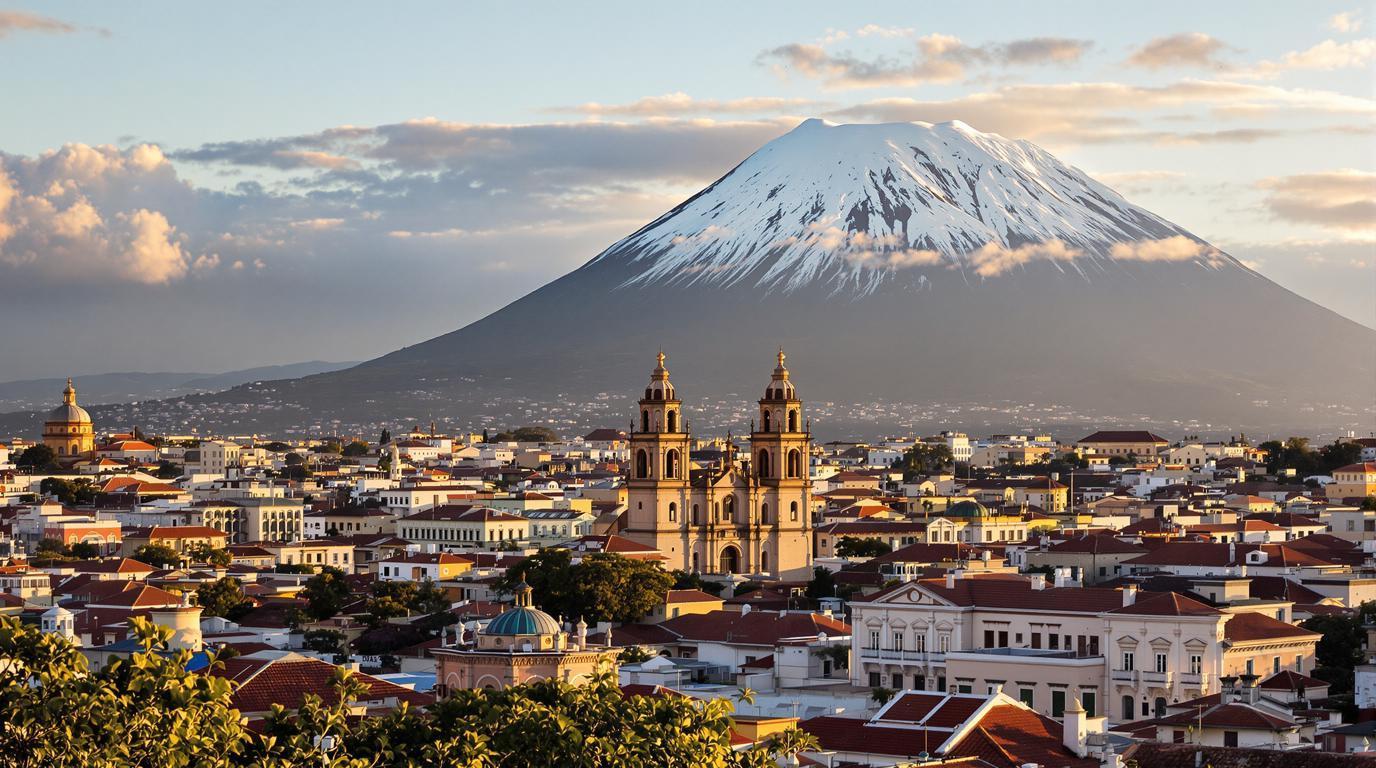Standing at 9,350 feet above sea level in the heart of the Andes, I discovered something extraordinary that defies everything you think you know about equatorial destinations. While most travelers assume crossing the equator means sweltering heat and humid air, Quito maintains a perfect 65°F year-round temperature that makes you forget you’re just 15 miles south of the equatorial line. This capital city of 2.02 million residents has mastered the art of high-altitude living in ways that put other Andean destinations to shame.
The moment you step into Quito’s historic center, the visual similarity to Cusco strikes you immediately. Both cities showcase stunning colonial architecture built from local volcanic stone, both earned UNESCO World Heritage status, and both sit dramatically high in the Andes. But here’s where Quito reveals its secret advantage over Peru’s famous tourist magnet.
Unlike Cusco’s punishing 11,155-foot elevation that leaves visitors gasping for breath, Quito’s more manageable altitude means you can actually enjoy exploring without altitude sickness ruining your first three days. The locals I met seemed almost protective of this advantage, as if they didn’t want word spreading about their perfectly balanced mountain paradise.
The Colonial Secret That Outshines Cusco Without the Crowds
Architecture That Rivals the Sacred Valley
Walking through Quito’s historic center feels like discovering authentic colonial charm without the tourist masses that have overwhelmed other South American destinations. The city boasts Latin America’s best-preserved colonial district, where 16th-century churches and monasteries line cobblestone streets that haven’t changed in centuries. What sets Quito apart from Cusco is the sheer scale of preservation – over 320 hectares of untouched colonial architecture versus Cusco’s more compact historic core.
The Volcanic Advantage Cusco Can’t Match
Perched on the slopes of Pichincha volcano, Quito offers something Cusco simply cannot: active volcanic drama combined with stable temperatures. The volcanic soil creates incredibly fertile conditions that support the city’s unique microclimates, while the equatorial location ensures consistent daylight hours year-round. This geographical lottery ticket means you’ll never face the extreme temperature swings that make Cusco’s weather so unpredictable.
Hidden Authenticity That Defies Mass Tourism
The Local Secret Tourists Never Discover
Unlike Cusco’s tourist-saturated streets leading to Machu Picchu, Quito maintains authentic neighborhood life that continues undisturbed by mass tourism. The locals in areas like La Ronda still practice traditional crafts passed down through generations, creating an authentic cultural experience that feels genuine rather than performed. You’ll find indigenous markets where Quechua-speaking vendors sell produce from surrounding valleys, maintaining traditions that predate the Spanish conquest.
Cultural Preservation Without the Tourist Theater
While Cusco has become a staging ground for Machu Picchu expeditions, Quito remains a living city where heritage protection happens without tourist crowds diluting the experience. The city’s museums, churches, and cultural centers operate primarily for local residents, creating opportunities for authentic interactions that feel natural rather than commercialized.
Travel Note: During my week exploring Quito’s historic center, I noticed something remarkable – locals actually use these colonial spaces for daily life rather than just posing for tourist photos. The Plaza Grande serves as a genuine community gathering place where families meet on Sunday evenings, not just a backdrop for Instagram shots.
The Exclusive Experience Locals Don’t Want Tourists to Discover
Perfect Climate That Beats Cusco’s Extremes
Here’s the insider secret that makes Quito superior to Cusco: the altitude advantage creates perfect conditions without the suffering. While Cusco’s visitors spend days acclimating to the thin air, Quito’s 2,850-meter elevation provides just enough altitude for dramatic mountain views without the debilitating effects. The equatorial location means you’ll enjoy consistent temperatures whether you visit in July or December.
Access Without the Tourist Infrastructure Overload
Quito’s international airport handles fewer tourists than Cusco’s, meaning shorter lines, easier connections, and less crowded attractions. The city’s infrastructure supports actual residents rather than just tourist buses, creating a more authentic urban experience where you can explore like a local rather than being herded through predetermined tourist routes.
Insider Access and Local Secrets
When to Visit for Maximum Authenticity
The best-kept secret about Quito is that July through September offers the driest weather for exploring, while most tourists still head to Cusco during these same months. This timing allows you to experience the city’s outdoor markets, rooftop restaurants, and volcanic hiking opportunities without battling crowds or unpredictable weather patterns.
The Volcanic Bonus Cusco Can’t Offer
Unlike Cusco’s mountain views, Quito provides access to active volcanic experiences within the city limits. Pichincha volcano offers hiking trails that lead to crater views and geological formations impossible to find around Cusco. Local guides share volcanic monitoring updates that add an element of geological excitement to your cultural exploration.
While Cusco continues drawing masses of tourists seeking Machu Picchu access, Quito offers something increasingly rare in South America: authentic Andean culture at a manageable altitude where you can actually breathe. The city’s perfect fusion of colonial heritage, volcanic drama, and equatorial climate creates an experience that satisfies both culture seekers and adventure travelers without the crowds that have overwhelmed Peru’s tourist circuit.
For travelers seeking the visual drama of Cusco with the comfort of perfect weather and authentic local culture, Quito represents the South American destination that hasn’t been discovered by mass tourism yet. Visit before the secret spreads beyond the adventure travel community.
